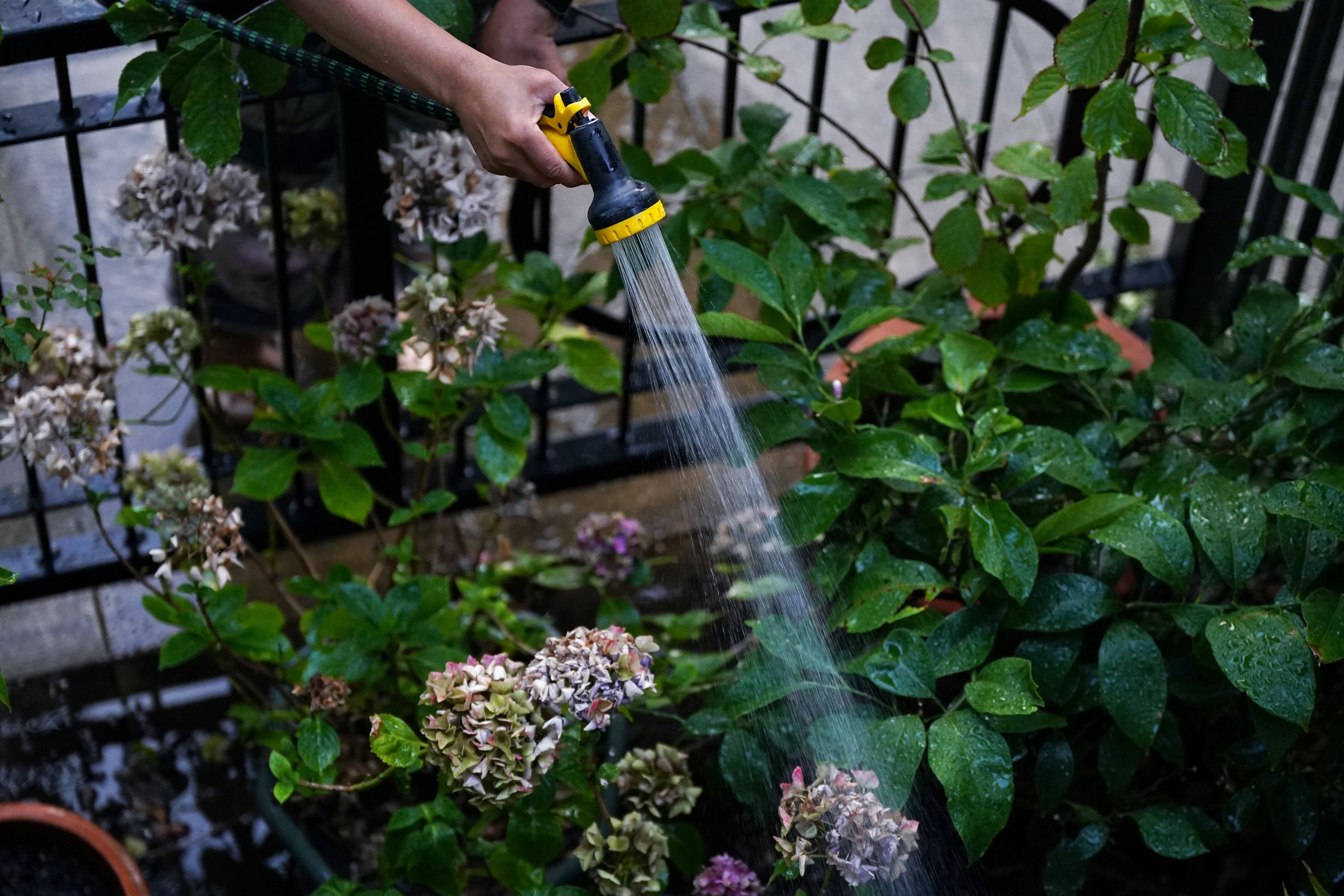Hosepipe ban ended for more than five million households after three months
Yorkshire Water says ban can be lifted thanks to wetter-than-average autumn

A water company which supplies more than five million households is ending the hosepipe ban it introduced at the height of the summer drought.
Yorkshire Water said the county is still classified as in drought by the Environment Agency but the ban can be lifted thanks to a wetter-than-average autumn and the public’s efforts to save water.
In July and August, reservoirs across the North of England dropped dramatically following months of record low rainfall, with some reaching unprecedented levels, exposing lost villages and drowned bridges.
Yorkshire Water imposed its hosepipe ban on August 26 and the firm said on Tuesday that it helped save an average of 28 million litres per day as reservoirs dried up.
In recent weeks, the autumn deluge has seen many reservoirs fill dramatically.
One image which captured the summer drought and heatwave was of the old bridge which was exposed at Baitings Reservoir, near Ripponden, West Yorkshire, due to the ultra-low water levels. The bridge is now back under water as levels in the reservoir continue to rise.
The Woodhead Reservoir, on the A628 Woodhead Pass Road between Sheffield and Manchester, managed by United Utilities, is now completely full just three months after its exposed, parched and cracked bed became another symbol of the hot, dry summer.
Neil Dewis, director of water at Yorkshire Water, said: “We’re really grateful to our customers for their efforts to save water whilst the weather was drier than usual.
“Thanks to a number of emergency drought schemes, drought permits, increased leakage activity, rainfall, and everyone’s efforts to save water, reservoirs are now looking much healthier – with the average level across the region now at 75%.”
Yorkshire Water said schemes which have helped have included a 1.2-mile (2km) pipeline laid over the moors from Walshaw Dean Upper Reservoir in Calderdale to Ponden Reservoir in the Worth Valley which helped the reservoir levels to increase from 20% to around 80%.
The company also said it is on track to reduce leakage by more than 9% this year, taking it closer to its goal of 15% reduction by 2025.
Last week, officials said that most of England remains in drought despite recent heavy rainfall and water companies must plan ahead to avoid potential problems next summer.
Above-average rainfall in October and November has helped reservoir stocks across England rise to around 68% capacity with 10 of the Environment Agency’s 14 English regions remaining in drought.
Some reservoirs remain well below the levels expected for the time of year, including Colliford Reservoir in Cornwall, which is at only 24% of capacity, Roadford Reservoir in Devon at 43% capacity, and Grafham Water in Cambridgeshire, which is 63% full.
Projections by experts for the National Drought Group showed that, if winter rainfall levels are 80% of the long-term average, depleted reservoirs and aquifers are unlikely to fully recover, and farmers’ water supply storage reservoirs may not fully refill.



Bookmark popover
Removed from bookmarks